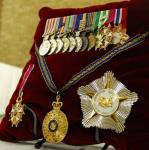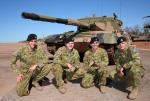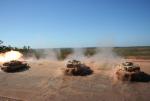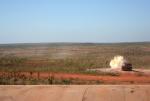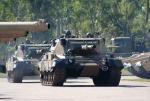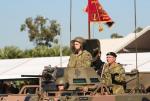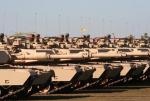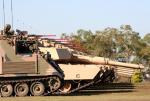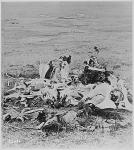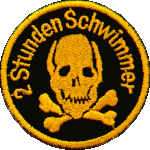-
Posts
1,411 -
Joined
-
Last visited
-
Days Won
1
Content Type
Profiles
Forums
Blogs
Gallery
Events
Store
Everything posted by Tiger-pie
-

New Air Force Award Unveiled
Tiger-pie replied to Lukasz Gaszewski's topic in United States of America
A very long way Ed... I can't speak for the UK system because I don't have a great deal of knowledge about it, but at least the Commonwealth countries have straight forward rules with little or no grey area to create confusion. I have been in contact with both the Canadian and New Zealand Honours and Awards high level staff seeking their advice and they came across as very switched on, and their rules are similar to our own. Sidenote: I have put in a proposal for an Australian Memorial Cross similar in design to the Canadian and NZ type, thus needed their advice on rules and regulations so that my proposal look more polished. When I joined I only ever expected to be wearing a long service medal when I got out. You didn't see many multiple medal groups among Aussies, except for the Vietnam blokes who were still about (you still see the occasional Vietnam group/modern combo with some of the older reserves doing desk jobs). Now the world is a much changed place and the younger generation want visual recognition of their achievements, so now not only do we have medals, but things such as (using Navy as an example, though it applies to all services) Sea Readiness Badge, Commendation Badges in Bronze, Silver or Gold for those who have "picked from the crowd" and qualification badges for various branches of the officer corp and some specialist trade badges for NCO's. This all adds up to a lot of holes in your shirt! Most of these have only been relatively recent developments, though it has caused a bit of friction (read jealous) among those who left prior to their implimentation. Personally I don't think we get much more than what our forebears did, it is just that the qualification times in "war" or "war-like" areas have decreased to reflect the reduced combat times of modern warfare (well until we got bogged down in a couple of places anyway), and we get at least one shiny badge to pin on. Then there is peace-keeping/humanitarian missions medals, but I think that is outside of the scope of this discussion as they are usually non-military awards, or come from an external agency such as the UN. Regards; Johnsy -

General John Baker
Tiger-pie replied to Tiger-pie's topic in Great Britain: Orders, Gallantry, Campaign Medals
The medals are: Distinguished Service Medal Australian Active Service Medal 1945-1975 Vietnam Medal with MiD Australian Service Medal 1945-1975 Centenary Medal Defence Force Service Medal with 5 bars National Medal with 1 bar And the rest are foreign medals, looks like US Army Merit Medal, Vietnam Medal, LOM and what might be a medal from Singapore, though I'm not sure. Drapped through the middle is the Companion of the Order of Australia (AC), as Darrel has pointed out, on the far corner is the LOM Commander Grade, and in the foreground is the Darjah Utama Bakti Chemerlang (Tentera) or Distinguished Service Order (Military) from Singapore. Regards; Johnsy -

General John Baker
Tiger-pie replied to Tiger-pie's topic in Great Britain: Orders, Gallantry, Campaign Medals
Foreign awards have no order of precedence, they are worn as awarded, though I would point out that if the man was alive this rack would be illegal for day to day wear. Australian citizens may accept and wear foreign awards when a government with which Australia maintains diplomatic relations makes an offer. Australians may also accept and wear foreign awards when an offer is made by an agency of the United Nations or by other international organisations recognised diplomatically by Australia. During the Vietnam War, some Australian Defence Force members were offered US, South Vietnamese and/or Cambodian military awards for acts of gallantry or particular service supporting the allied war effort. Examples of these awards include the Republic of Vietnam Cross of Gallantry, the Cambodian National Defence Medal (with Silver or Bronze Star), and the US Distinguished Service Cross, Distinguished Flying Cross, Silver Star and Legion of Merit. At the time Australian military personnel could not officially accept or wear foreign honours and awards. The Australian Government accepted a recommendation of the Committee of Inquiry into Defence and Defence Related Awards in 1994, and now allows acceptance and wearing of these honours, but only where suitable documentary evidence of the offer of the award is available. Under the current guidelines the government may seek the Governor-General?s approval of applications to accept and wear these honours. To Paul R he served from 1954 until 1998. -
General John Baker died earlier this week. He was the former head of the ADF. This is his medal group as displayed at his funeral. Regards; Johnsy
-

Last Days of the Leopard
Tiger-pie replied to Tiger-pie's topic in Armour, Vehicles, Ships & Aircraft
-

Last Days of the Leopard
Tiger-pie replied to Tiger-pie's topic in Armour, Vehicles, Ships & Aircraft
-

Last Days of the Leopard
Tiger-pie replied to Tiger-pie's topic in Armour, Vehicles, Ships & Aircraft
-

Last Days of the Leopard
Tiger-pie replied to Tiger-pie's topic in Armour, Vehicles, Ships & Aircraft
-

Last Days of the Leopard
Tiger-pie replied to Tiger-pie's topic in Armour, Vehicles, Ships & Aircraft
-

Last Days of the Leopard
Tiger-pie replied to Tiger-pie's topic in Armour, Vehicles, Ships & Aircraft
-

Last Days of the Leopard
Tiger-pie replied to Tiger-pie's topic in Armour, Vehicles, Ships & Aircraft
-

Last Days of the Leopard
Tiger-pie replied to Tiger-pie's topic in Armour, Vehicles, Ships & Aircraft
-

Last Days of the Leopard
Tiger-pie replied to Tiger-pie's topic in Armour, Vehicles, Ships & Aircraft
-

Last Days of the Leopard
Tiger-pie replied to Tiger-pie's topic in Armour, Vehicles, Ships & Aircraft
-
Further to my last. It is traditional that the winner is "chaired" off the range by the other shooters. The Imperial medal was replaced in Australia in 1988 by the Champion Shots Medal (of Australia). I think that this was the case in all Commonwealth countries. Regards; Johnsy INSTRUCTIONS 68/GENERAL/8510 A.O. 58/1962 THE QUEEN'S MEDAL (for Champion Shots in the Military Forces) Revised Rules 1. Her Majesty has been graciously pleased to approve the grant of a medal to be awarded annually to the Champion Shots, respectively, of the undermentioned Forces:- (a) The Military Forces at Home, except those at (b) hereunder. (b) The Army Emergency Reserve, Categories I and II(A) and the Territorial Army. ? The Military Forces of Canada. (d) The Military Forces of Australia. (e)The Military Forces of New Zealand. (f) The Military Forces of Ceylon (g) The Military Forces of the Federation of Rhodesia and Nyasaland and the Bristish South Africa Police. (h) The Ghana Armed Forces. 2. The medal will be designated "The Queen's Medal (for Champion Shots in the Military Forces)". 3. The medal will be in silver and will be similar in design to the medal instituted by the Royal Warrant dated 30th April 1869, but will bear on the obverse the effigy of Her Majesty. 4. The ribbon will be similar to that on the medal instituted by the Royal Warrant dated 30th April 1869. 5. In each case in which a medal is issued, a clasp will be affixed denoting the year of the award. Not more than one medal will be given to any winner. In the event of a winner in one category winning later in another category, the award will take the form of a clasp with the year date exactly as if the second win had been in the original category. The same rules apply to the award of clasps. 6. In undress and service uniform, when ribbons are worn, the grant of a second or further clasp will be denoted by the wearing of the ribbon of a small silver rose, one or more, according to the number of clasps awarded. 7. The medals will become the property of the winners and may be worn during the whole of their service. They will be worn on the left breast. 8. The medals will be competed for under battle firing conditions at an annual central meeting in the territory of the relevant force named in paragraph 1. All competitors must be actual serving members of the Regular Army, Army Emergency Reserve, Categories I and II(A), Territorial Army, or Local Militia and Volunteer Forces, inthe countries concerned. 9. The competition for the Military Forces at Home will be held during the Central Meeting of the Army Rifle Association, and the medal will be awarded to the winner of the Army Championship at that meeting. The competition for the Army Emergency Reserve, Categories I and II(A), and the Territorial Army, will be held during the Annua Bisley Meeting of the National Rifle Association and the detailed conditions, as approved by the Army council, will be published in the Handbook of that Association. 10. The competitions in Canada, Australia, New Zealand, Ceylon and the Federation of Rhodesia and Nyasaland and Ghana will be held at a recognized annual central meeting where one exists, or at a meeting to be nominated by the General Staff of the country concerned. The detailed conditions for these competitions will be drawn up by the respective General Staffs of the countries concerned, based on the conditions as published for the competition at home but modified as may be necessary to meet local circumstance, but in any case the spirit of the competition will not be departed from. 11. The names of the winners of the competitions will be notified to the Under-Secretary of State, The War Office, for the publication in Army Orders. The ribbon may be worn immediately the results of competitions are notified. 12. Army Orders 74 of 1954, 137 of 1954, 43 of 1956 and 3 of 1959 are hereby cancelled.
-
It is still awarded here in Australia as the Champion Shots Medal and is worn after all other Australian awards, but before any foreign award (including Imperial Long Service and Efficiency awards). I know that doesn't really answer your question, but as the award is based on the Imperial system of recognising excellence in "musketry", I would imagine that there would be a similar ruling. Three of these are handed out each year, one for each service. I met a RAAF NCO that had four rosettes on his ribbon to this medal!! Regards; Johnsy
-
Live and learn... Thanks for the info, all the references I have looked at with regards to those medals have been for the Army version. Regards; Johnsy
-
Having grow up on a farm, I know this mate. Seen plenty of carcasses, and their deteriation over months and years. This photo has always struck me a being a poignant reminder poor military planning. There is a least one photo from every conflict since the camera was invented that reflects this. It would have been the equivalent at its time as looking at casualities on the Somme, or at burnt out hulls of tanks and vehicles on the Highway of Death, Falaise Gap, Kursk etc. Sounds a bit dramatic, but I'm sure we are all struck by some images from history. Regards; Johnsy
-
That Indian peeling back the scalp. Gruesome, but interesting... I note that they have depicted Custer as standing in the middle of his men, fighting to the last, as was common with many period prints. Guess that was a bit more romantic than the fact that it was a military blunder, and the end result...
-

Regimental Names
Tiger-pie replied to Craig's topic in Great Britain: Research, Documentation & History
6 RAR (Royal Australian Regiment) This regiment coverted to paratroopers, and became known as "Dirt Darts" to us sailors. Regards; Johnsy -
G'da Kev 6 and 7 are not specific to the Navy, they were awarded to all arms of the forces. They were also awarded to Commonwealth troops, as my uncle fought on mainland Greece and Crete and he was awarded both, strangely enough. I have them in their boxes of issue with the award certificates. I applied on his behalf through the Greek Consulate in Melbourne, requesting the Commemorative Medal of the War 1940-41, and they awarded him with both of the above!! I don't believe he qualified for the 41-45 medal under its guidelines for issue, but someone obviously made a mistake or was feeling generous. Regards; Johnsy
-
It is a Deutsche Arbeitsfront, DAF, flag. There a couple of variations on this design, but basically what you have there is a factory flag that would be flown to show that the factory was performing above and beyond its required quota, hence the gold cog as opposed to the common black cog. Regards; Johnsy
-
A very impressive piece, I have seen turtle shell used as a display piece, but not the engraved bone. It would be difficult to put a price on it, really would only appeal to a small market I would imagine. There are people who collect scrimshaw, so it may be a valuable historical piece or just a curio. Regards; Johnsy
-

Indian WWI trios
Tiger-pie replied to Ed_Haynes's topic in Great Britain: Orders, Gallantry, Campaign Medals
What exactly do they do with the ribbons over there? It seems as if many Indian groups are sans ribbon. Regards; Johnsy -

HJ Diamond
Tiger-pie replied to Tom Y's topic in Germany: Third Reich: Uniforms, Headwear, Insignia & Equipment
When I get home I will have a crack at it with a program I have, and see if I can enhance it. With regards to the patch on the hip of the woman on the extreme right, that might be the Schwimmabzeichen, which had a Totenkopf on it for the higher grades. Nothing to do with any political organisation, just indicates that you have risked your life at some point, it was a badge indicating a certain level of swimming skill and assistance with a rescue. Came in (and still does), three grades. There are lower grades than the totenkopf badge, so those hip badges may be one of those as it doesn't look like there is a Deathshead on it. Regards; Johnsy



